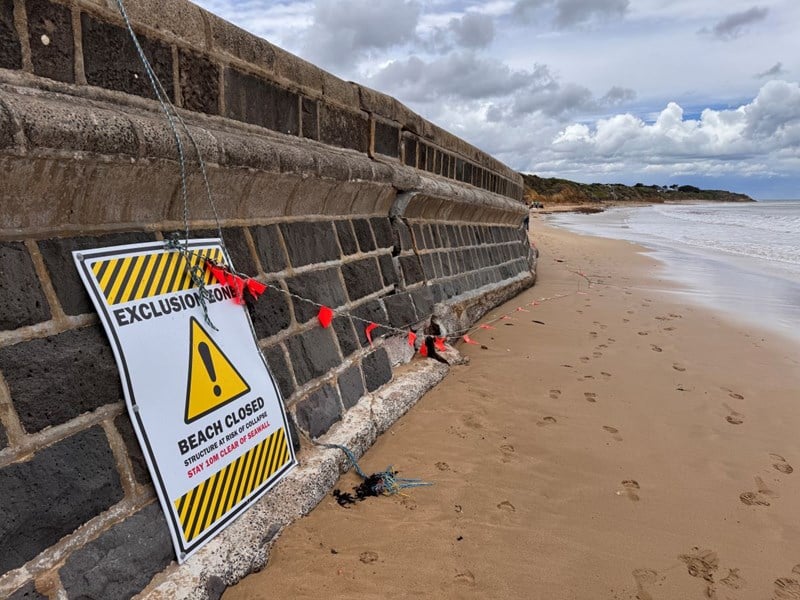- Home /
- News /
- Infrastructure
Embracing a ‘build-back-better' approach to climate resilience
14 August 2025 Read the report

Victoria should shift from a traditional like-for-like rebuilding model to a ‘betterment’ approach that prioritises climate resilience and long-term infrastructure sustainability, according to a report tabled in the Legislative Council.
The Legislative Council Environment and Planning Committee inquiry examined the way that climate change is impacting on Victoria’s built environment and the infrastructure associated with it.
‘We did some in-depth examinations of how our planning and building systems are responding to the risks posed by climate change and also how good governance of climate issues can help ensure that the community is well prepared for climate-related events,’ Committee Chair Ryan Bachelor told the Legislative Council.
‘The Committee heard and research shows that existing climate zones and weather patterns in Victoria are changing, with extreme weather events such as heatwaves, bushfires, droughts, storms and flooding events becoming more common because of climate change,’ he said.
Among the report’s 82 recommendations was that the 'Victorian Government support betterment in rebuilding infrastructure with climate resilient designs and provide funding to local government to help achieve this’.
‘This report advocates that we need to not only respond well to disasters when they occur but also ensure that in the response and the follow-up to those disasters we are building resilience into our built environment, doing more to ensure preparedness for future disasters and putting in place mitigation measures to reduce the impact of climate change,’ Mr Batchelor said.
The inquiry heard evidence of betterment funds being established and operating successfully in other jurisdictions.
The Queensland Betterment Fund covers the additional costs of improving infrastructure beyond standard restoration expenses.
‘By upgrading these assets to a more resilient standard, the approach seeks to mitigate the impact of future disasters, reduce economic and social disruption, and improve long‑term sustainability,’ according to the Committee’s report.
This approach has saved Queensland taxpayers hundreds of millions of dollars in avoided costs.
East Gippsland Shire Council Mayor Tom Crook was one of a number of stakeholders who told the Committee that councils should be supported to build back better.
‘There seems to be a presumption in a lot of our existing funding arrangements that when infrastructure is damaged we just build it back the same. We need to build those bridges higher so they do not get washed away in the next flood,’ he told a Committee hearing in Traralgon.
Similarly Frances Ford from the City of Greater Bendigo told the Committee that the approach saved money over the long run.
'Sometimes it is as basic as that: the thickness of your road base,’ she said.
‘Yes, it is more per metre, but it more than pays for itself within a very short period of time.’
The report noted that betterment funding was first approved in Victoria for a select number of councils impacted by the October 2022 floods.
‘Fourteen of the 63 councils affected by the floods received a share of a total $9.4 million, announced ten months after the event, which allowed for these councils to make small scale improvements,’ according to the report.
The report explores a wide range of issues including the risk to Victoria’s built environment and infrastructure and the response required of the state’s planning system. It also explores opportunities for government, individuals, and communities to investigate in enhancing their resilience in the face of a changing climate.
The report has made a total of 93 findings and 82 recommendations and is available on the Committee’s website.